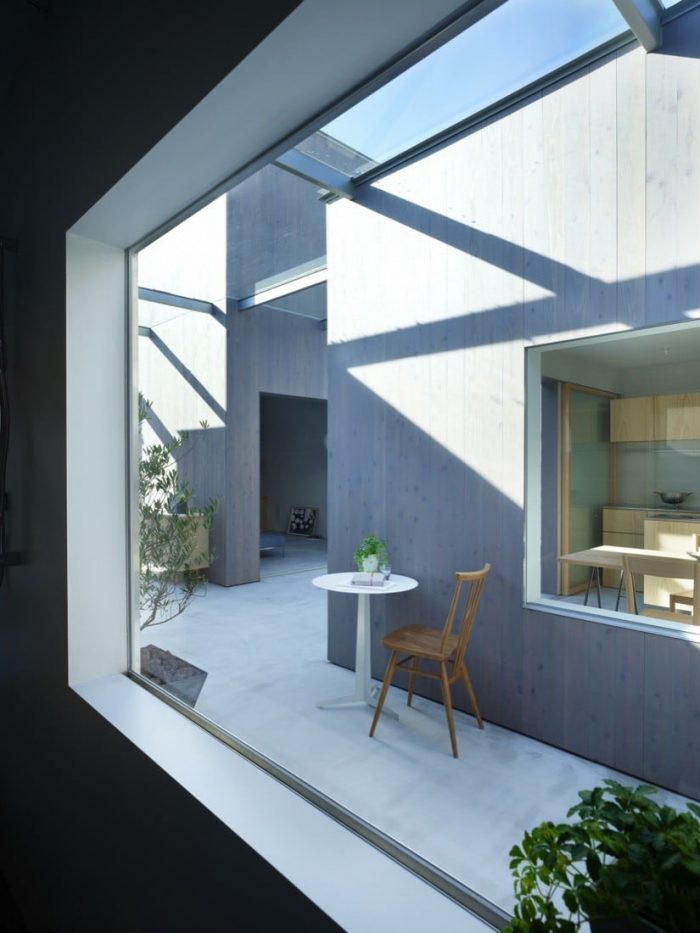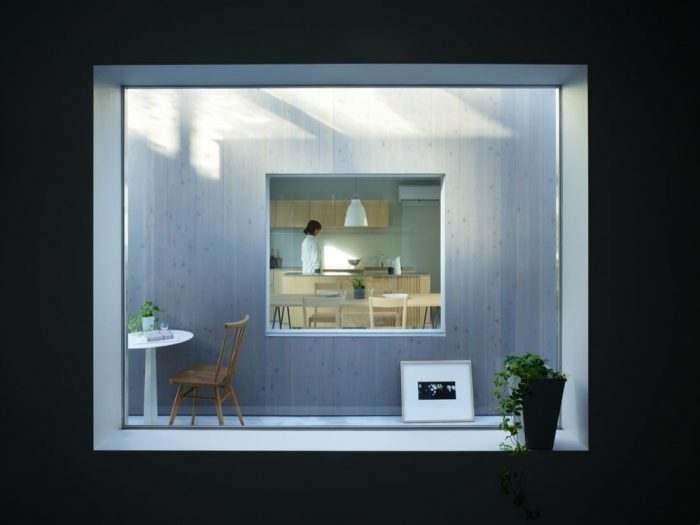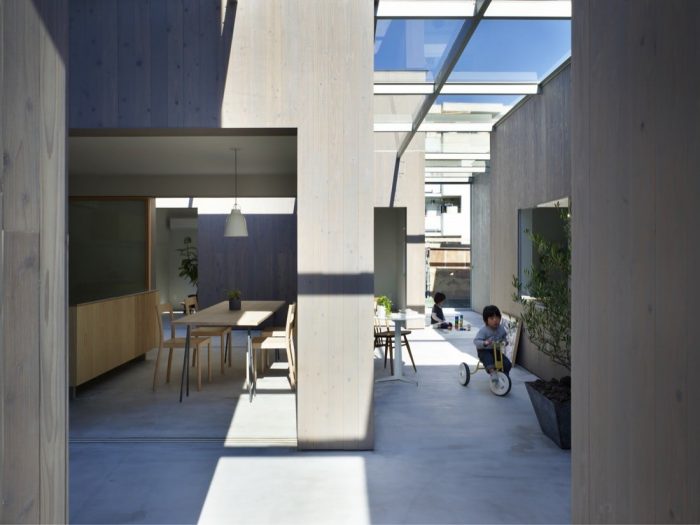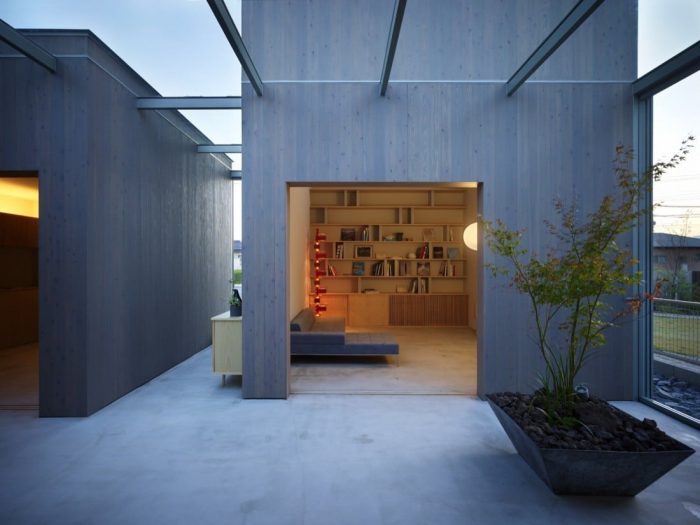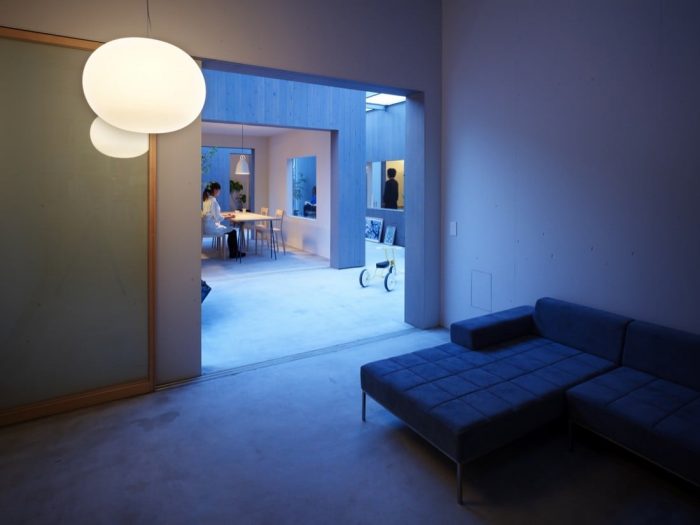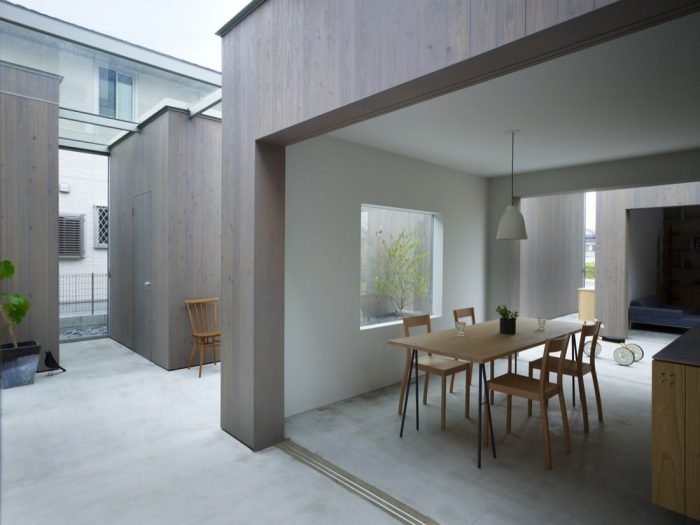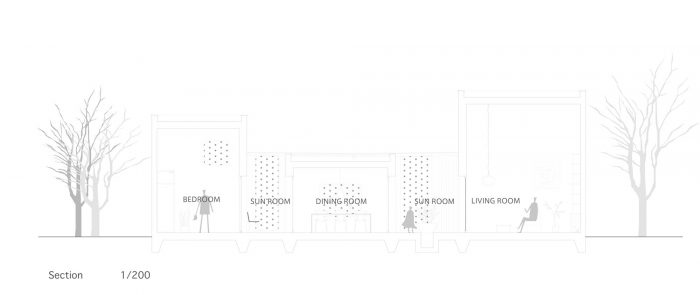当他们还小的时候,像房屋之间的狭窄小路、花园的边缘、棚子的后面、地板下或空地等地方都是孩子们喜欢的游乐场所。与其说是为了玩而建的公园或花园,我们想做一个有院子的房子,让它自然成为一个游乐场。
When they are young, places like a narrow path between houses, the edge of a garden, the back of a shed, under the floor, or an open lot are the preferred playgrounds of children.Rather than a park or garden that was built to be played in, we wanted to make a house with a courtyard that would become a playground naturally.
与其说这是一个房间的集合,不如说是一个建筑的集合,我们的设计似乎是由各种不同的结构组成的。由玻璃屋顶覆盖的小路在互不相干的结构之间交织,创造出一个感觉是外部的内部空间,一个感觉是公共的私人空间,一个感觉是大道的大厅。在那个空间里,孩子们可以跑来跑去,你可以在吃饭时享受微风,在阳光下阅读,看着星星入睡。
Rather than a collection of rooms, we think of this house as a collection of constructions, and we produced a design that seems to be made out of various different structures. Paths covered by a glass roof weave between the disconnected structures to create an interior space that feels exterior, a private space that feels public, a hall that feels like an avenue. In that space the children can run around, you can enjoy a breeze while you eat, read under the sun, and fall asleep watching the stars.
那里有一种超乎想象的魅力,超越了正常的家庭生活。就像孩子们充分使用外面的空间一样,我们希望通过使用庭院作为日常生活的一部分,使内部和外部的关系变得平等,并将内部活动带到外面。
There is a charm beyond imagination there, beyond normal home life.Just like children who use space outside to its full potential, we wanted to make equal the relationship between inside- and out by using the courtyard as a part of everyday life and bringing inside activities outside.
除了让城市街道像庭院一样让人感觉更接近房屋之外,我们想继续尝试和设想未来的建筑,超越内部和外部的关系,找到新类型的联系。
Beyond making city streets like courtyards to make them feel closer to houses, we want to continue to try and envision the architecture of the future, moving past the inside-outside relationship to find new types of connections.
Architects: Suppose Design Office
Area : 266 m²
Year : 2009
City:BUZEN-SHI
Country:Japan




